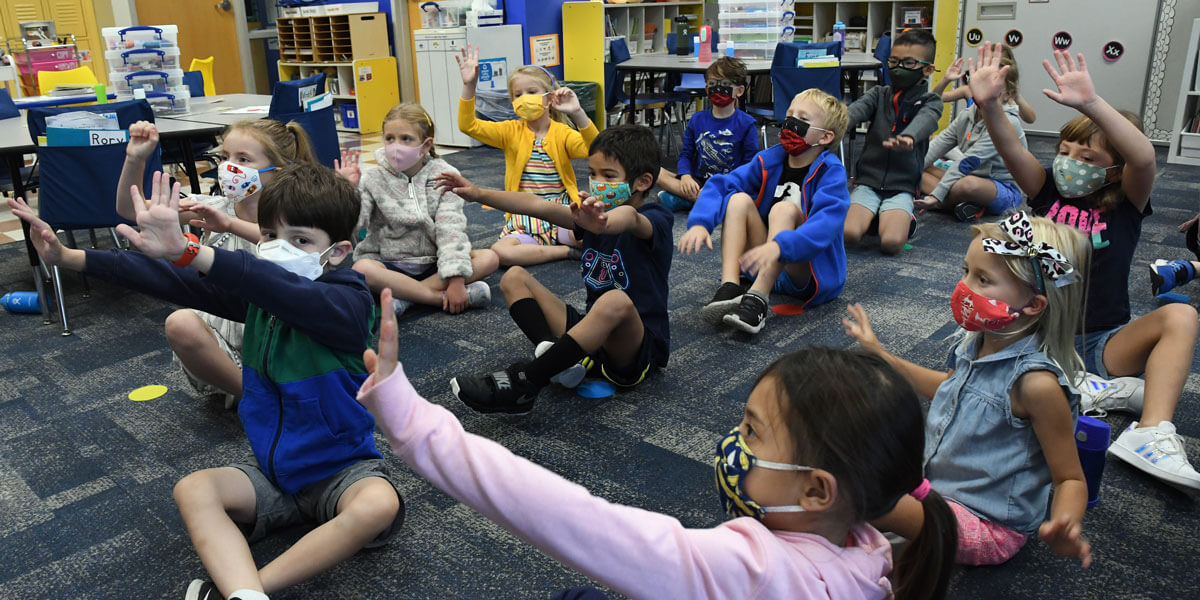“Morning Meeting helps me to get settled and be with my classmates before the busy part of my day begins.” –5th Grader
In Colorado Academy Lower School classrooms, Pre-K through Fifth Grade begin their day as a family with a class meeting. The Lower School supports the Responsive Classroom approach in setting the tone and expectations for the school day. It is a student-centered, social-emotional learning model to create a classroom culture that promotes kindness, unity, awareness, acceptance, and independence. It supports our school mission to create curious, kind, courageous, and adventurous learners and leaders.
Last week during my walking tour of the Lower School, I was able to see class meetings in action. The classes reviewed the calendar and schedule for the day, and then they quickly moved on to the greeting portion of their meeting. These were so fun to observe, as I saw students quickly engage with one another and get ready to begin the day as a class. Three fun greetings I observed included:
Shoe Soup
Everyone removes one shoe and tosses it into a pile on the floor. A student selects a shoe, finds the owner, and greets that person. It continues until everyone is greeted and all shoes are returned.
Snowball Fight
Each student writes their name on a small piece of paper. They ball it up tightly, and everyone throws “snowballs” for a short time. The teacher calls “stop,” and each person picks up a snowball closest to them. Students take turns greeting their snowball choice.
I can do this!
One student begins and chants “My name is ____ and I can do this!” while doing an action (clapping, snapping, jumping, etc.). The class responds by saying “Your name is _____ and you can do this!” and copying their movements.
During class meeting, teachers also address topics to support social-emotional learning at each developmental level. Sometimes these topics are proactive (preparing students for future situations), and sometimes they are reactive (supporting a situation that has already occurred that could benefit the class). During my walking tour, I had the opportunity to see both.
The proactive lesson included a teacher guiding students through an activity about how to ask for help when they are confused or not sure how to complete an academic task. She facilitated two scenarios, developed steps to follow, and role-played with the students. In the reactive lesson, the teacher addressed a situation from the previous day about how to care for the supplies in the classroom and put them away when a task is finished. In both situations, the teachers empowered the students to be the problem-solvers and develop solutions that were age appropriate and agreeable to all.
Beginning the day in this thoughtful and deliberate way sets the students up for success and provides them with strategies to use in the future. And as one Kindergartner shared with me, “Morning meeting is the sunshine in my morning.”
